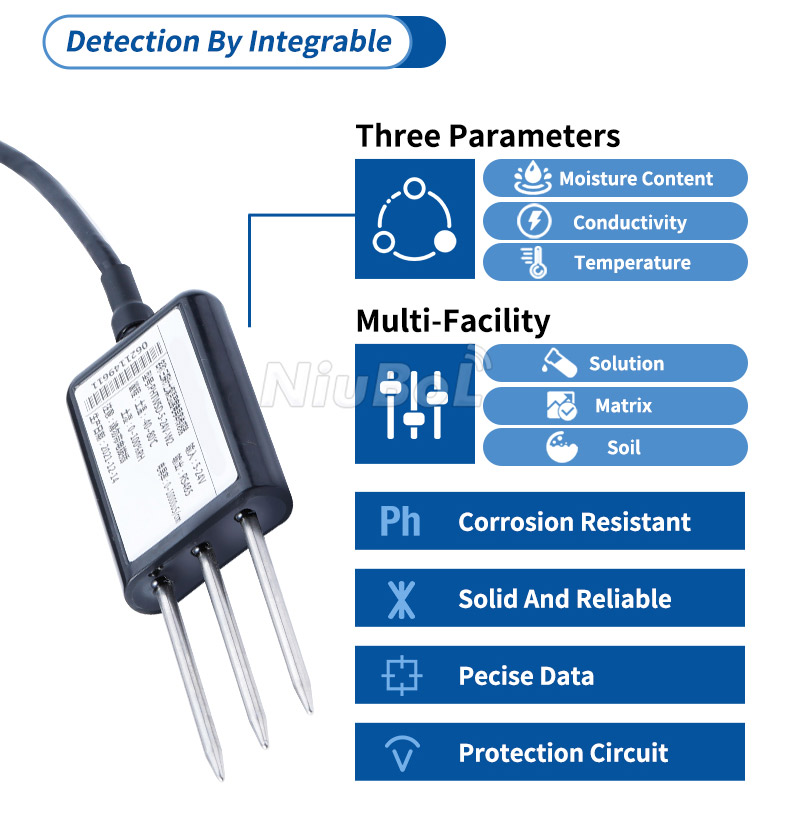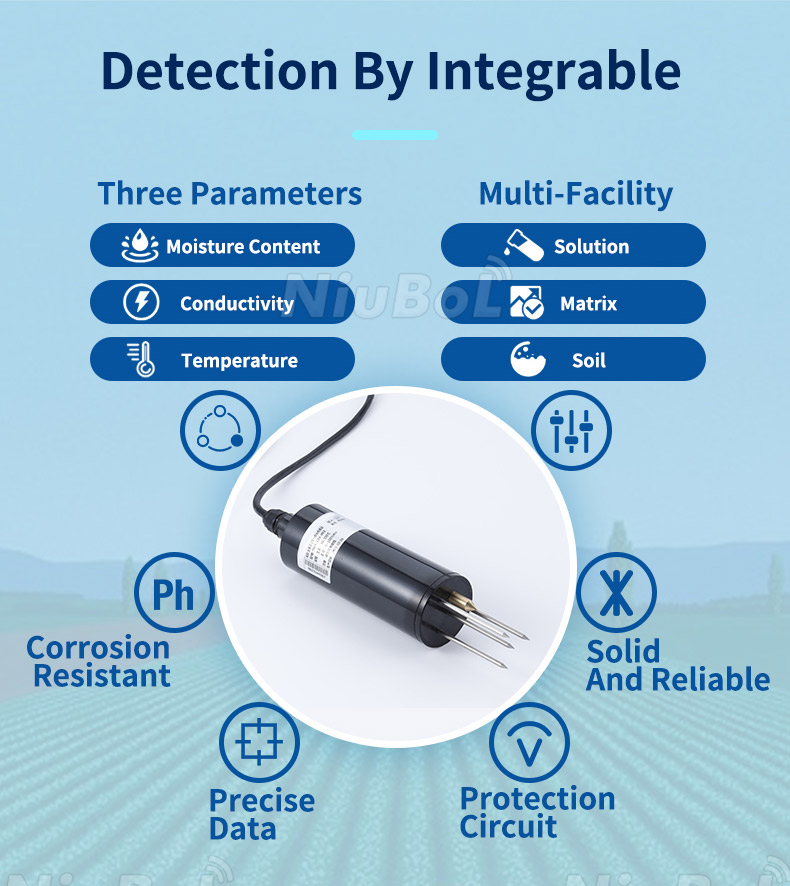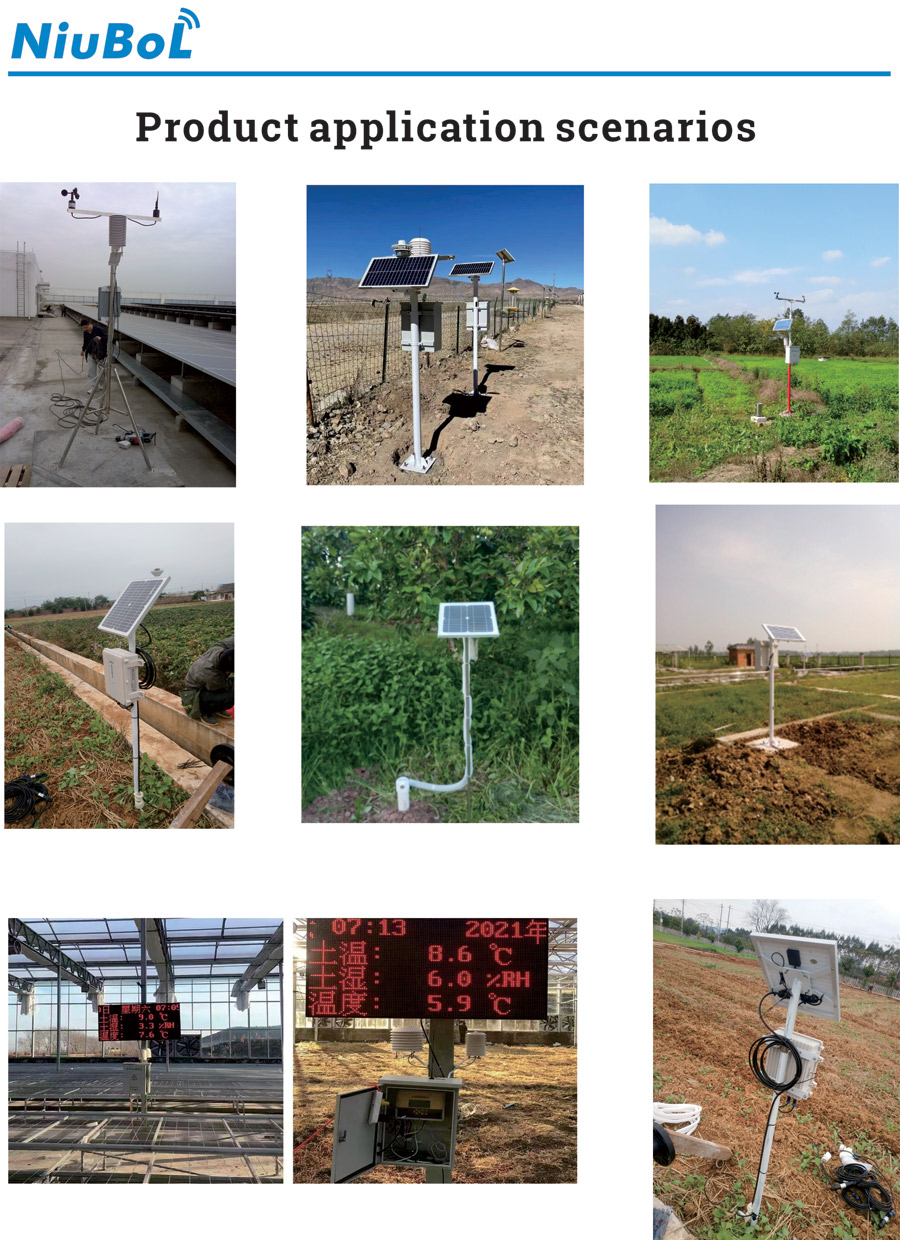

— Blogs —
—Products—
 Consumer hotline +8618073152920
Consumer hotline +8618073152920 WhatsApp:+8615367865107
Address:Room 102, District D, Houhu Industrial Park, Yuelu District, Changsha City, Hunan Province, China
Product knowledge
Time:2024-11-10 17:22:45 Popularity:305
A soil moisture sensor, or soil moisture sensor, soil moisture sensor, soil moisture content sensor, is a device designed to measure the moisture content of soil. These sensors have a wide range of applications in various fields such as agricultural irrigation, forestry conservation, environmental monitoring and scientific research. Below is an overview of soil moisture sensors, including their working principle, main features, and application areas.
- This is a simple device, usually with one or more probes, that indicates the presence of moisture when inserted into the soil. The hygrometer may be equipped with a scale or indicator to show the approximate level of moisture.
- Application scenarios: home gardening, small farms.
- These sensors estimate moisture content by measuring the capacitance of the soil. The capacitance varies with the dielectric constant of the soil-water mixture.
- Application scenarios: gardening, small agricultural projects.
- Tensiometers measure the tension in the soil, which is related to the ability of the plant root system to extract water from the soil. They provide an indication of whether the plant is in a state of water stress.
- Application scenarios: horticulture, small-scale agriculture.
- FDR sensors use electromagnetic waves to measure the apparent dielectric constant of the soil and thus infer the moisture content of the soil. This method is applicable to different types of soil with high accuracy and stability.
- Application scenarios: farmland management, scientific research.
- TDR sensors send an electromagnetic pulse through a soil probe and measure the time it takes for the pulse to pass through the soil. This time is proportional to the moisture content of the soil.
- Application scenarios: farmland management, environmental monitoring.
- Gypsum block sensors reflect changes in soil moisture content by measuring conductivity. The conductivity inside the gypsum block varies with soil moisture.
- Application scenarios: farmland management, environmental monitoring.
Whichever device you choose, the ultimate goal is to better manage and optimise soil moisture to improve crop yields, conserve water and protect the environment.

The working principle of soil moisture sensors relies mainly on the change of the dielectric properties or conductivity of the soil to indirectly measure the moisture content.
- Most modern soil moisture sensors use the dielectric constant method. These sensors usually contain one or more pairs of electrodes inside, forming a capacitor. As the soil moisture changes, the dielectric constant of the soil changes, which in turn affects the capacitance of the capacitor. Because the dielectric constant of water is much higher than that of air and soil particles, an increase in the moisture content of the soil results in an increase in the capacitance value. By measuring the change in capacitance value, the sensor can determine the moisture condition of the soil.
- Common techniques for measuring dielectric constant include frequency domain reflectance (FDR), time domain reflectance (TDR), and others.
- Another common method is to indirectly measure moisture content by measuring the electrical conductivity of the soil. This method is based on the property of water to act as a good conductor, whereas dry soil has poor electrical conductivity. The sensor sends an electric current through an electrode into the soil and measures the conductivity of the current. The more water there is in the soil, the higher the conductivity. By monitoring the change in conductivity, the moisture condition of the soil can be reflected.
1. High accuracy: modern soil moisture sensors can provide highly accurate measurements to ensure the reliability of the data.
2. Real-time monitoring: many sensors support real-time monitoring function, which can continuously record changes in soil moisture and help users make timely decisions.
3. Easy to install and use: most soil moisture sensors are designed to be simple and easy to install and maintain.
4. Durability: In order to adapt to the outdoor environment, the sensors are usually made of corrosion-resistant materials, which ensures their long-term stability under various conditions.

1. Agricultural production: In agriculture, soil moisture sensors are used to monitor soil moisture to help farmers develop a reasonable irrigation plan to improve water use efficiency, while promoting crop growth.
2. Environmental monitoring: Soil moisture data is important for research on climate change, water management and ecological protection. The data provided by the sensor helps scientists to better understand the impact of environmental changes on soil moisture.
3. Scientific research: Soil moisture sensors are also indispensable tools for collecting experimental data and validating theoretical models in research in the fields of soil science, ecology and climatology.

In conclusion, soil moisture sensors are an important monitoring tool that supports research and development in several fields by providing accurate soil moisture data.
1.NBL-S-THR Soil Temperature Moisture Sensor datasheet
NBL-S-THR-Soil-temperature-and-moisture-sensors-Instruction-Manual-V4.0.pdf
2. NBL-S-TMC Soil Temperature Moisture EC Sensor datasheet
NBL-S-TMC-Soil-temperature-and-moisture-conductivity-sensor.pdf
3. NBL-S-TM Soil Temperature Moisture Sensor datasheet
NBL-S-TM-Soil-temperature-and-moisture-sensor-Instruction-Manual-4.0.pdf
4. NBL-S-TMCS Soil Temperature, Moisture, Conductivity and Salinity Integrated Sensor
NBL-S-TMCS-Soil-Temperature-Humidity-Conductivity-and-Salinity-Sensor.pdf
Related recommendations
Sensors & Weather Stations Catalog
Agriculture Sensors and Weather Stations Catalog-NiuBoL.pdf
Weather Stations Catalog-NiuBoL.pdf
Related products
 Combined air temperature and relative humidity sensor
Combined air temperature and relative humidity sensor Soil Moisture Temperature sensor for irrigation
Soil Moisture Temperature sensor for irrigation Soil pH sensor RS485 soil Testing instrument soil ph meter for agriculture
Soil pH sensor RS485 soil Testing instrument soil ph meter for agriculture Wind Speed sensor Output Modbus/RS485/Analog/0-5V/4-20mA
Wind Speed sensor Output Modbus/RS485/Analog/0-5V/4-20mA Tipping bucket rain gauge for weather monitoring auto rainfall sensor RS485/Outdoor/stainless steel
Tipping bucket rain gauge for weather monitoring auto rainfall sensor RS485/Outdoor/stainless steel Pyranometer Solar Radiation Sensor 4-20mA/RS485
Pyranometer Solar Radiation Sensor 4-20mA/RS485
Screenshot, WhatsApp to identify the QR code
WhatsApp number:+8615367865107
(Click on WhatsApp to copy and add friends)